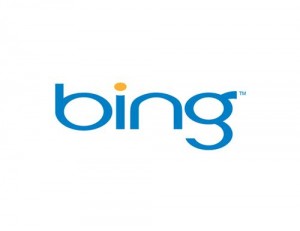by John Chidley-Hill

One month into the Bing.com era, and Microsoft is still playing catch-up to search engine giant Google.com. The Microsoft portal, advertised as a “decision engine”, was formally launched on June 3, and has seen some gains on Google’s share of the market.
It’s definitely going to be an uphill battle for a software developer that is undoubtedly missing the heady days of the mid-90s before there were iPods, Firefox and Gmail, and the world was Microsoft’s oyster.
Team Gates’ most recent search engine, Live Search, was not a success. Neither were its predecessors: Windows Live Search and MSN Search.
Unfortunately for Microsoft, Bing is in something of a catch-22. Google has been successful because it offers an incredibly powerful search engine that is stripped down of all the crazy extras of earlier platforms like Yahoo! or Alta Vista.
Therefore, Bing has to have a simple interface, and yet somehow have more value added than Google.
At this point, Bing only has six options in Canada: web, image, video, and news searches, as well as a maps feature and something called xRank, which shows what the most popular searches are on Bing.
All four search functions are pretty standard, not gaining any particular edge over Google. Sure, there’s a search history list that appears on a left-hand menu, but that’s also readily available through Google with minimal clicking. Nothing special.
Bing also lacks some of Google’s robustness. Unlike Google, there is no calculator function or define function. Typing a “define:” command only offers one definition, from Microsoft affiliate Encarta, and then a series of web links. Not as useful as the big G’s built-in dictionary.
Most of Microsoft’s fancier search additions are currently only in the United States, a knock in this Canadian’s mind. Hopefully they’ll be available for international IP addresses soon. It’s Bing’s Map feature that caught my eye. Building upon Google Maps’ standard, they offer a road map and a satellite aerial view but have also added two neat features of their own. The traffic feature allows the user to see how quickly some roads are moving, and also offers cautions for scheduled road maintenance so that drivers can avoid costly delays. Pretty handy stuff.
They have also developed the “bird’s eye” view, which is apparently based on photos from planes or helicopters. It allows the users to see the city in a quasi-3D view. This lets users, at long last, to see the sides of buildings so they actually stand a chance of recognizing them from the street. Of course, if the building you’re looking for is significantly shorter than its immediate neighbour to the south, well then you’re out of luck.
It’s a good idea though, hopefully one that they’ll continue to develop. It’s highly unlikely that Microsoft, or anyone else for that matter, will ever be able to loosen Google’s grip on search engine supremacy. But Bing is a good try, and worth a look, particularly for its clever maps features.

Pretty nice post. I just stumbled upon your blog and wished to say that I have really enjoyed browsing your blog posts. In any case I’ll be subscribing to your feed and I hope you write again very soon!